Title : HIV-1 subtypes and drug resistance in newly infected children through vertical transmission in Peru (2020-2022)
Abstract:
Introduction: In Peru, the vertical transmission rate of HIV is 3%. However, the impact of Antiretroviral Treatment (ART) on the transmission of resistant HIV strains in infected newborns remains unknown.
Objective: To determine the molecular resistance to antiretroviral (ARVs) and the genetic diversity of HIV in children under 18 months of age infected through mother-to-child transmission (MTCT) between 2020 and 2022.
Methodology: Blood samples from 51 HIV-1-infected children were genotyped using next-generation sequencing. The process involved the extraction of RNA/DNA, followed by nested RT-PCR targeting the pol gene (separately amplifying the protease-reverse transcriptase and integrase regions), preparation of genomic libraries, and sequencing by synthesis using the Illumina MiSeq platform. Consensus pol gene sequences were obtained at detection thresholds of 20% and 1% using the HyDRA web server (https://hydra.canada.ca/). To ensure data quality, consensus sequences were validated with the WHO HIVDR QC Tool; samples failing quality control were excluded from further analysis. Resistance mutations and ARV resistance profiles were identified using the Stanford University HIV db program algorithm. Genetic diversity was analysed with the MEGA X phylogenetic program, and recombinant forms were identified using the Recombinant Identification Program (RIP-HIV), COMET HIV-1 and REGA HIV-1 Subtyping Tool 3.0.
Results: Sequence analysis at the 20% detection threshold revealed that 37.1% (19/51) of samples exhibited at least one resistance-associated mutation; primarily affecting Non-Nucleoside Reverse Transcriptase Inhibitors (NNRTIs). The most frequent mutations were K103N (42.1%) and G168S (26.3%). Genetic diversity analysis identified that 47 (92.2%) corresponded to subtype B, while 4 sequences (7.8%) showed intersubtype recombination (A/G and B/F). At the 1% detection threshold, only 38 cases passed the quality control, with resistance to any ARV found in 52.6% of these cases, again predominantly affecting NNRTIs. The most common mutations at this threshold were K103N (45%), V106I (25%) and G168S (20%), with increased instances of intersubtype recombination observed (13.2%). Conclusions: These analyses underscore the importance of studying diverse minority populations, as they provide valuable insights into drug resistance and the identification of additional recombinant forms. This information is crucial for clinician in selecting appropriate therapeutic regimens, ultimately improving the quality of life of this vulnerable population.
This work was funded by CONCYTEC, PROCIENCIA program, under contract No. 015-2019-Prociencia.



